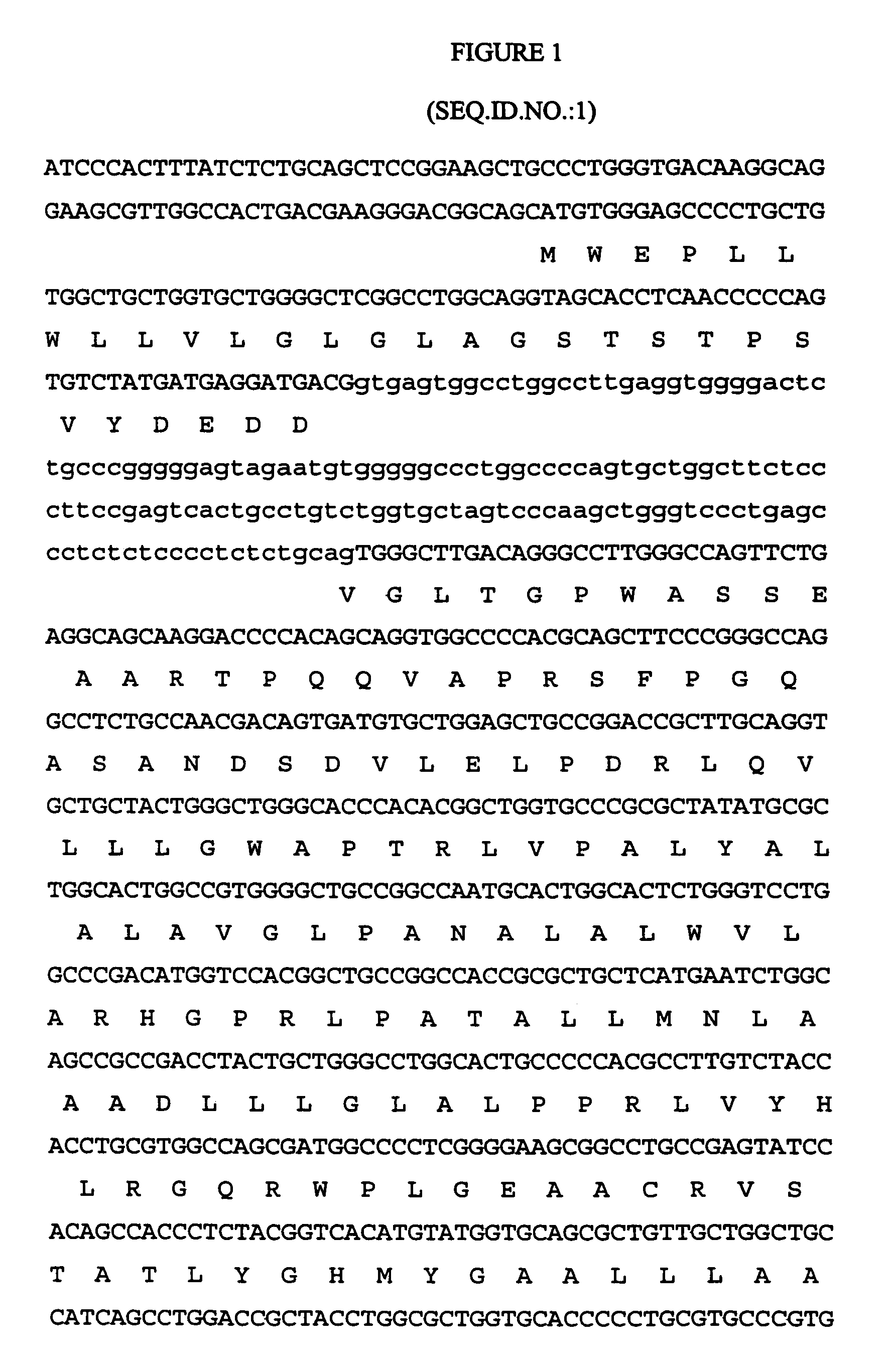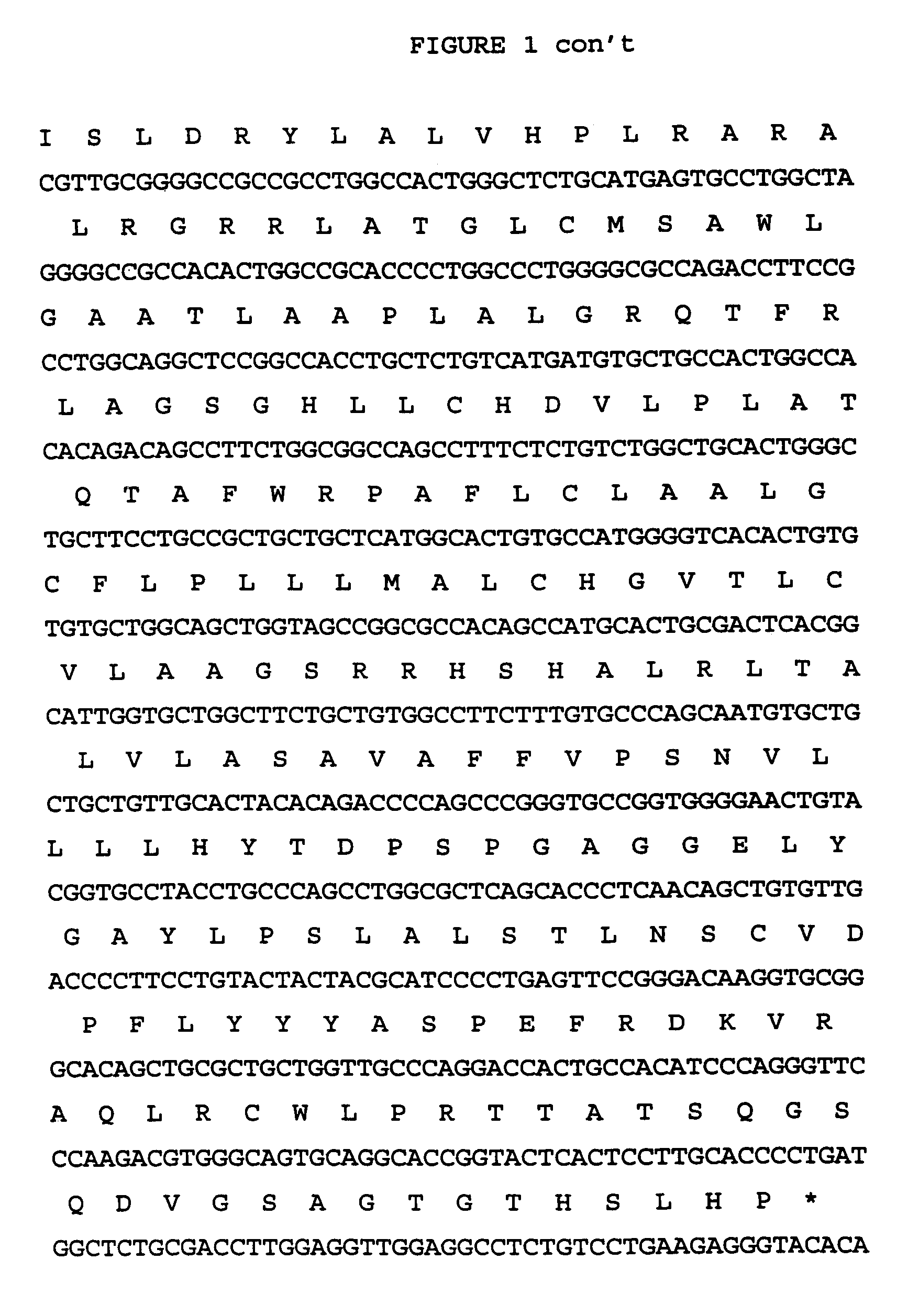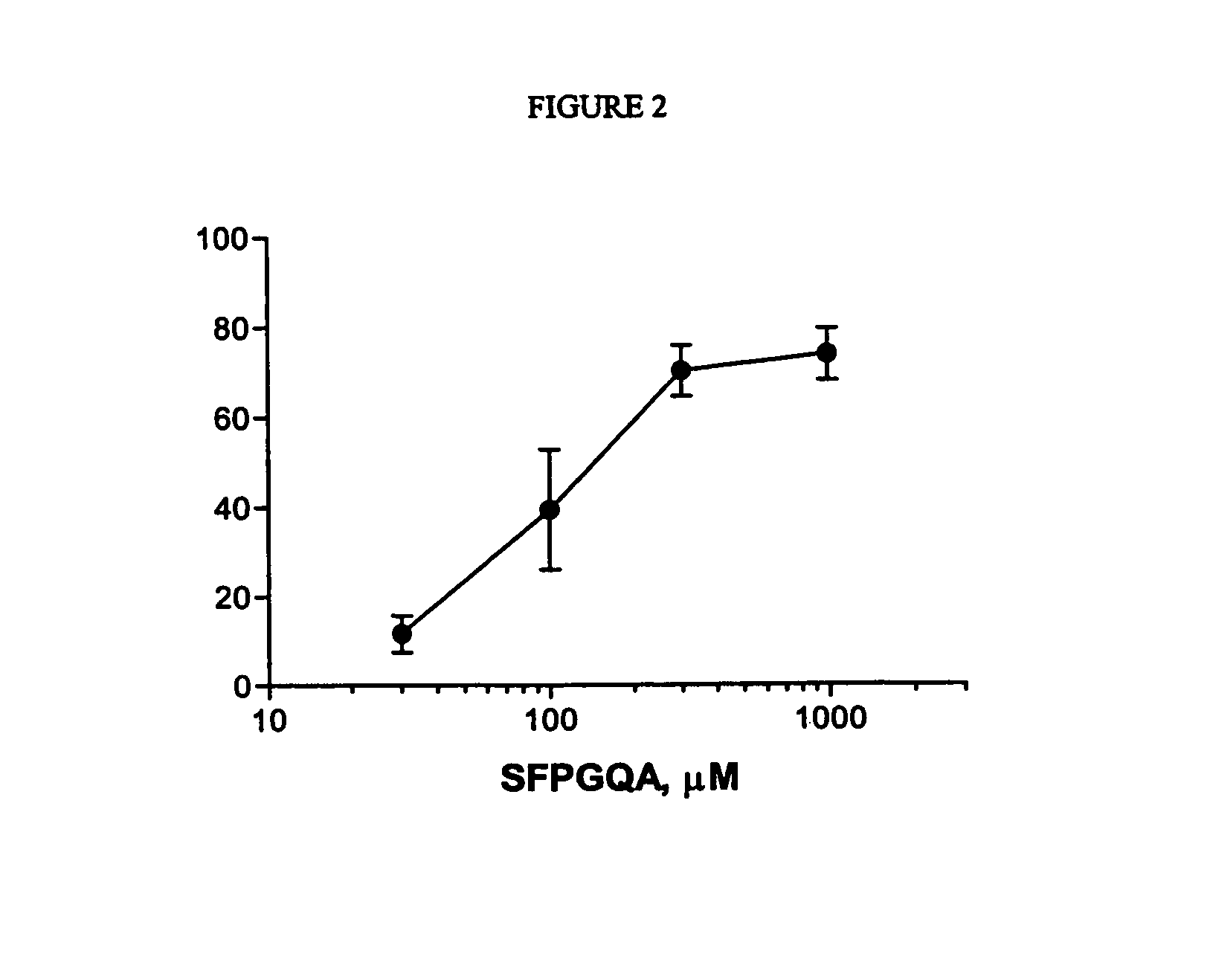Guinea pig proteinase-activated receptor 4 and its activating peptide
a proteinase activation and receptor technology, applied in the field of guinea pig proteinase activation receptor 4 and its activating peptide, can solve the problem that the mouse model is not an accurate model of human par-4 activation, and achieve the effect of inhibiting par-4 activation
- Summary
- Abstract
- Description
- Claims
- Application Information
AI Technical Summary
Benefits of technology
Problems solved by technology
Method used
Image
Examples
example 1
Isolation and Characterization of the Guinea Pig PAR-4 Gene
[0094]A probe corresponding to nucleotides 329 to 786 of human PAR-4 (Xu et al. (1998). Proc. Natl. Acad. Sci. U.S.A. 95:6642–6646; Genbank Accession AF055917) was 32P-labelled by random priming (Life Technologies) and used to screen 3×106 phage plaques of a λ FIX II guinea pig genomic library (Stratagene) under low stringency hybridization. Hybridizations were carried out using Rapid-hyb Buffer (AmershamPharmacia) for a minimum of 15 hr. at 55° C. Washes were carried out with two 20 min washes of 2× Standard Citrate Saline (SSC) / 0.1% SDS, and two 20 min washes of 0.2×SSC / 0.1% SDS at 55° C. Two positives were isolated and, following plaque purification, the entire genomic DNA inserts of both clones were independently subcloned into the Not I site of the plasmid vector pKS II (Stratagene). Restriction mapping indicated that these two genomic clones represented two distinct overlapping genomic fragments with sizes between 18 t...
example 2
Platelet Aggregation
[0097]Human platelet-rich plasma (PRP) concentrate (Biological Specialties, Inc., Colmar, Pa.) was gel-filtered (Sepharose 2B, Pharmacia, Inc.) in Tyrode's buffer (140 mM NaCl, 2.7 mM KCl, 12 mM NaHCO3, 0.76 mM Na2HPO4, 5.5 mM dextrose, 5.0 mM Hepes, and 2 mg / ml BSA, pH 7.4). Guinea pigs (400–800 g) were anesthetized and blood drawn via an intraarterial catheter. PRP was prepared by centrifugation at 200×g for 10 min. Guinea pig PRP was gel-filtered as above. Gel-filtered platelets were diluted with Tyrode's buffer (143,000 platelets / μl, per well) and 2 mM CaCl2 in a 96-well microtiter plate. Platelet aggregation was initiated by the addition of the guinea pig PAR-4 AP (SFPGQA-NH2, SEQ ID No.:7) peptide. The assay plate was gently mixed constantly. Aggregation was monitored at 0 and 5 min after agonist addition in a microplate reader (Molecular Devices) by optical density at 650 nm (ΔSOFT). Aggregation was calculated as the decrease in optical density between the...
PUM
| Property | Measurement | Unit |
|---|---|---|
| pH | aaaaa | aaaaa |
| pH | aaaaa | aaaaa |
| time | aaaaa | aaaaa |
Abstract
Description
Claims
Application Information
 Login to View More
Login to View More - R&D
- Intellectual Property
- Life Sciences
- Materials
- Tech Scout
- Unparalleled Data Quality
- Higher Quality Content
- 60% Fewer Hallucinations
Browse by: Latest US Patents, China's latest patents, Technical Efficacy Thesaurus, Application Domain, Technology Topic, Popular Technical Reports.
© 2025 PatSnap. All rights reserved.Legal|Privacy policy|Modern Slavery Act Transparency Statement|Sitemap|About US| Contact US: help@patsnap.com



